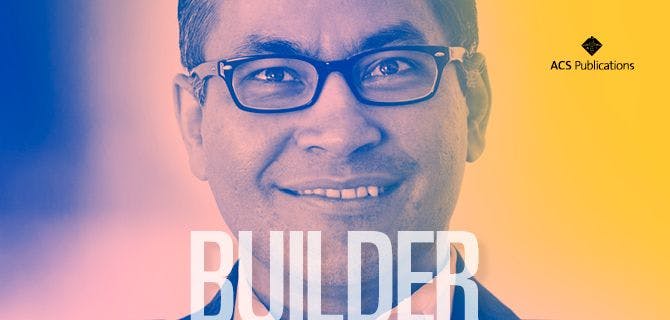Professor Ali Khademhosseini is a Professor of Bioengineering, Chemical Engineering, and Radiology at the University of California, Los Angeles, and is an Associate Editor of ACS Nano.

Professor Ali Khademhosseini is a Professor of Bioengineering, Chemical Engineering, and Radiology at the University of California, Los Angeles, and is an Associate Editor of ACS Nano.
He was born in Iran and lived there during the turbulence of the Iranian Revolution and the Iran-Iraq War. When he was young, Khademhosseini’s parents decided to move their family to Canada, in part because of the danger from the ongoing war, but also to offer a better future for Khademhosseini and his brother.
“In my school in Toronto,” said Khademhosseini, “literally every person was from a different country. We saw people from all over the place all come together so you really start to appreciate that people are more similar than different.”
Khademhosseini gained his first experience in lab work as an undergraduate at the University of Toronto. There he met Dr. Michael Sefton, whom he credits for exposing him to tissue engineering science. “They were encapsulating pancreatic cells in a polymer coating to try to make it inert to the body’s immune system, so you could take cells from pigs, for example, and be able to put it in people. I really fell in love with that research right off the bat. I said, okay, this is something that can have a real impact on how health care is performed.”
After two years of working on a Master’s at University of Toronto, he came to the U.S. to complete his degree at MIT. While working on his Ph.D., he met Dr. Robert Langer, a major figure in biomedical engineering. Meeting Langer at that time in his life was an inspiration, Khademhosseini said.
“He has created multiple scientific fields that are helping patients. Seeing someone like that at such a developing stage of one’s career is incredible because you see that there’s no limits to what a person can do. You see the humility and kindness of the person towards people he interacts with, it really does change your mind. It still motivates me, pushes me forward.”
Now at UCLA, his organ-on-a-chip project could reduce the cost of developing drugs by recreating human physiology outside of people, thus enabling better testing. Khademhosseini and his team are working to take cells from people to make different types of tissue, using new technologies like 3-D printing, and make them as functional as possible to get a better understanding of how a compound will work in humans.
Khademhosseini finds inspiration in seeing his work make an impact. This means not only watching his students learn and advance, but in helping to improve the lives of patients, too.
Read a Selection of Papers from Professor Ali Khademhosseini in ACS Publications Journals:
Development of Flexible Cell-Loaded Ultrathin Ribbons for Minimally Invasive Delivery of Skeletal Muscle Cells
ACS Biomater. Sci. Eng., 2017, 3 (4), pp 579–589
DOI: 10.1021/acsbiomaterials.6b00696
Emerging Trends in Micro- and Nanoscale Technologies in Medicine: From Basic Discoveries to Translation
ACS Nano, 2017, 11 (6), pp 5195–5214
DOI: 10.1021/acsnano.7b01493
Gelatin–Polyaniline Composite Nanofibers Enhanced Excitation–Contraction Coupling System Maturation in Myotubes
ACS Appl. Mater. Interfaces, 2017, 9 (49), pp 42444–42458
DOI: 10.1021/acsami.7b03979
Nanostructured Fibrous Membranes with Rose Spike-Like Architecture
Nano Lett., 2017, 17 (10), pp 6235–6240
DOI: 10.1021/acs.nanolett.7b02929